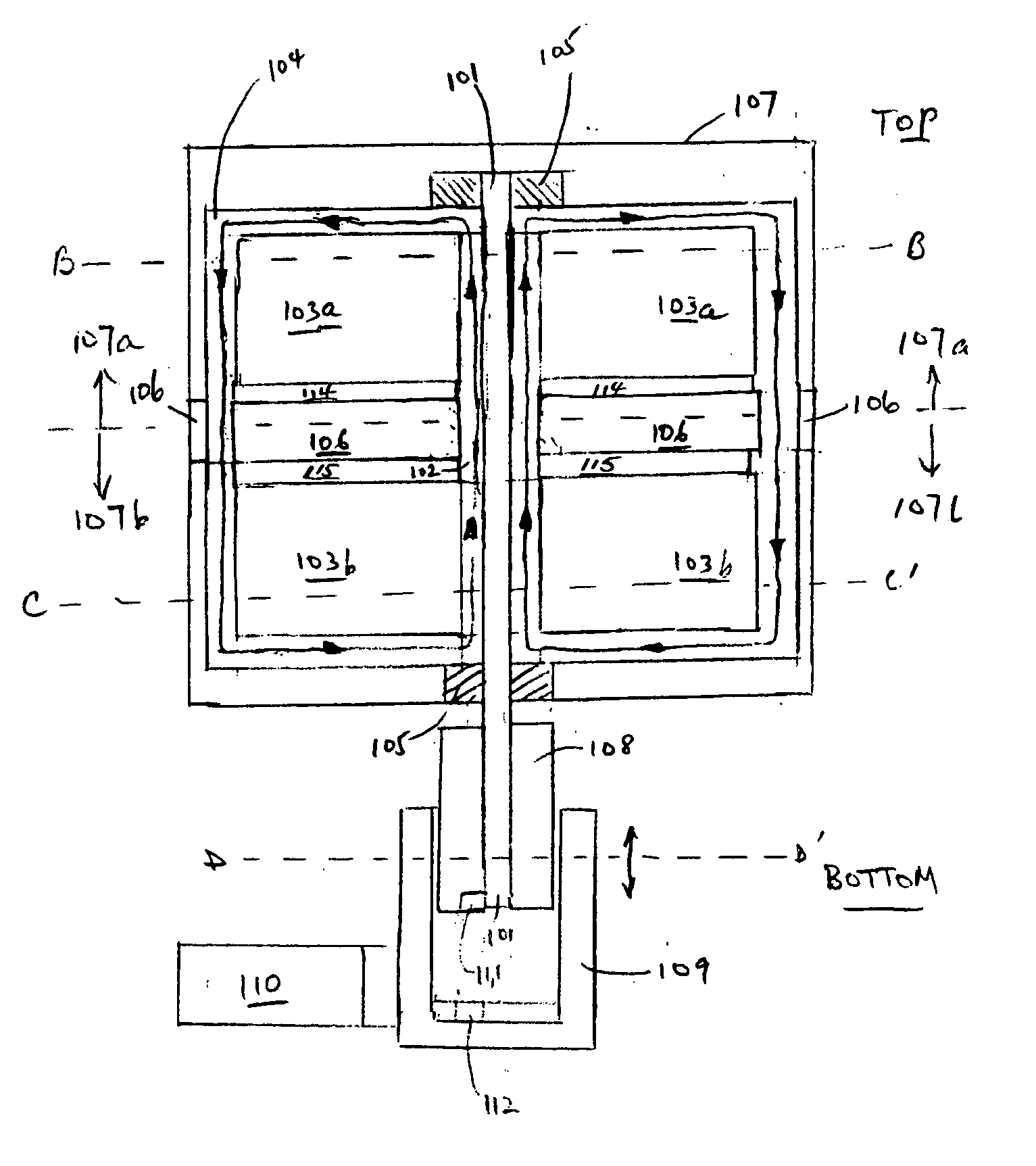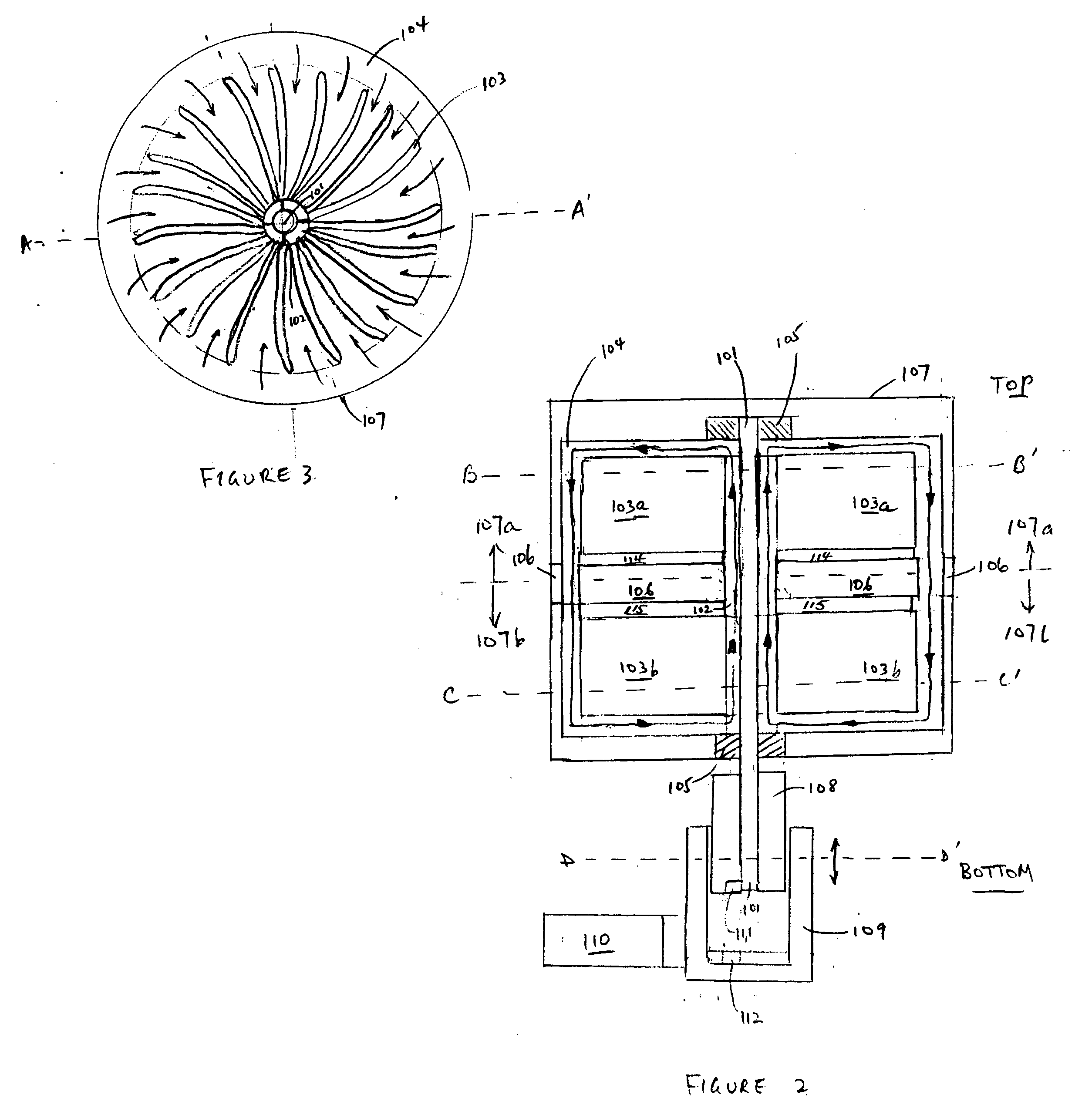Method and system for electrical and mechanical power generation using Stirling engine principles
a technology of stirling engine and principle, applied in the direction of mechanical power devices, machines/engines, mechanical apparatus, etc., can solve the problems of low efficiency, high cost of manufacture, complex design of stirling engine, etc., and achieve the effect of improving efficiency
- Summary
- Abstract
- Description
- Claims
- Application Information
AI Technical Summary
Benefits of technology
Problems solved by technology
Method used
Image
Examples
Embodiment Construction
[0019] The present invention provides a heat engine, operating under Stirling engine principles, for converting heat energy into mechanical and electrical energy. The electrical energy derived using a heat engine of the present invention may be in the form of alternating current (AC) power, for immediate distribution, or in the form of direct current (DC) to allow storage or other applications.
[0020] The heat engine of the present invention may operate with any source of heat energy, including solar, geothermal, fossil, landfill recovered or other fuels. FIG. 1 shows heat engine 100 receiving solar energy from a solar reflector 160, in accordance one embodiment of the present invention. One embodiment of heat engine 100 of FIG. 1 is shown in a cross section view in FIG. 2. As shown in FIG. 2, heat energy 100 includes an external housing 107 which seals a hot portion or zone 107a and a cold portion or zone 107b. In this detailed description, the terms “hot” and “cold” are relative. ...
PUM
 Login to View More
Login to View More Abstract
Description
Claims
Application Information
 Login to View More
Login to View More - R&D
- Intellectual Property
- Life Sciences
- Materials
- Tech Scout
- Unparalleled Data Quality
- Higher Quality Content
- 60% Fewer Hallucinations
Browse by: Latest US Patents, China's latest patents, Technical Efficacy Thesaurus, Application Domain, Technology Topic, Popular Technical Reports.
© 2025 PatSnap. All rights reserved.Legal|Privacy policy|Modern Slavery Act Transparency Statement|Sitemap|About US| Contact US: help@patsnap.com



